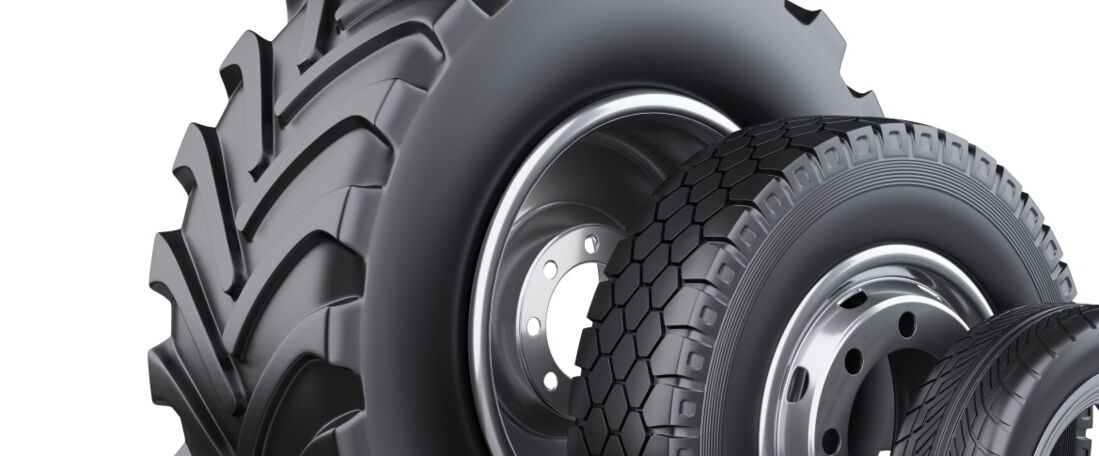
Truck tires
Resilient even on long hauls
Many commercial trucks cover long distances on a daily basis while transporting heavy goods. And due to their rather slow speeds, the trips can take many hours to complete. Truck tires have to carry and cushion the vehicle’s dry weight as well as its payload; in other words, the loads they are subjected to are considerable.
Tire treads must have sufficient wet grip in all weather conditions to ensure that trucks travel safely on all types of road. Moreover, quality tires are quieter when rolling, and their abrasion factor as well as their rolling resistance play a key role in terms of costs and sustainability. The lower the rolling resistance, the lower the fuel consumption and CO2 emission. The Tyre Label issued by the European Union (EU), which is also available for large truck tires, provides information on how well a tire performs in meeting various criteria.
Silica/silane system as a reinforcement for natural rubber
Rolling resistance, wet grip performance and abrasion resistance are the three corners of the “magic triangle” for tire performance. How well a truck tire performs in these three parameters depends heavily on the tire’s tread. In truck tires, the tread consists almost exclusively of natural rubber, optimized with a reinforcing filler system. In conventional truck tires, this filler is generally carbon black.
To improve the truck tire’s performance in terms of rolling resistance, wet grip and abrasion resistance, the industrial mixtures are to be – much like for car tires – partially or completely replaced by state-of-the-art systems based on silica/silane. Precipitated silica is a high-performance filler. However, as polar silica is not readily compatible with non-polar natural rubber, it is combined with specialty silanes. These silanes couple the silica to the rubber by creating a chemical bond on the molecular level that is stronger than a purely physical bond.
Natural rubber systems require greater amounts of silanes
The behavior of a large truck tire’s tread made from natural rubber and subjected to considerable stresses differs from how a car tire tread behaves. Partially replacing carbon black with silane-modified silica lowers the rolling resistance considerably – while fully replacing it reduces resistance by approximately 30 percent. The tire’s grip also improves. However, it is not possible to maintain the same level of abrasion resistance compared to tires based on carbon black mixtures. At least not initially.
The amount used is a crucial factor in the difference to filler mixtures used in car tire treads: Car tires require a silane share of roughly three percent; truck tires with natural rubber systems require substantially higher silane concentrations in order to achieve the desired performance.
Evonik is developing “green tires” for trucks
This is the reason why Evonik, along with many universities and institutes and various tire manufacturers, is developing cost-efficient and sustainable solutions for natural rubber-based compounds. As a supplier of silica and silanes from a single source, Evonik is ideally equipped for examining systems that use different silica and different silanes in varying quantities and ratios.
Customer-specific solutions using a partial replacement of carbon black with a silica/silane system already exist. However, research is ongoing, with the aim of combining the two objectives of achieving minimal rolling resistance and maintaining consistent abrasion into a single solution. If achieved, this would create “green tires” that result in better fuel efficiency for trucks as well – for more sustainability and greater cost efficiency.
The benefits at a glance:
- Chemical coupling of the filler to the natural rubber for higher tire durability
- Improved driving safety thanks to high wet grip performance
- Extremely low rolling resistance for better fuel efficiency
- Abrasion resistance rivaling the industry standard for carbon black
